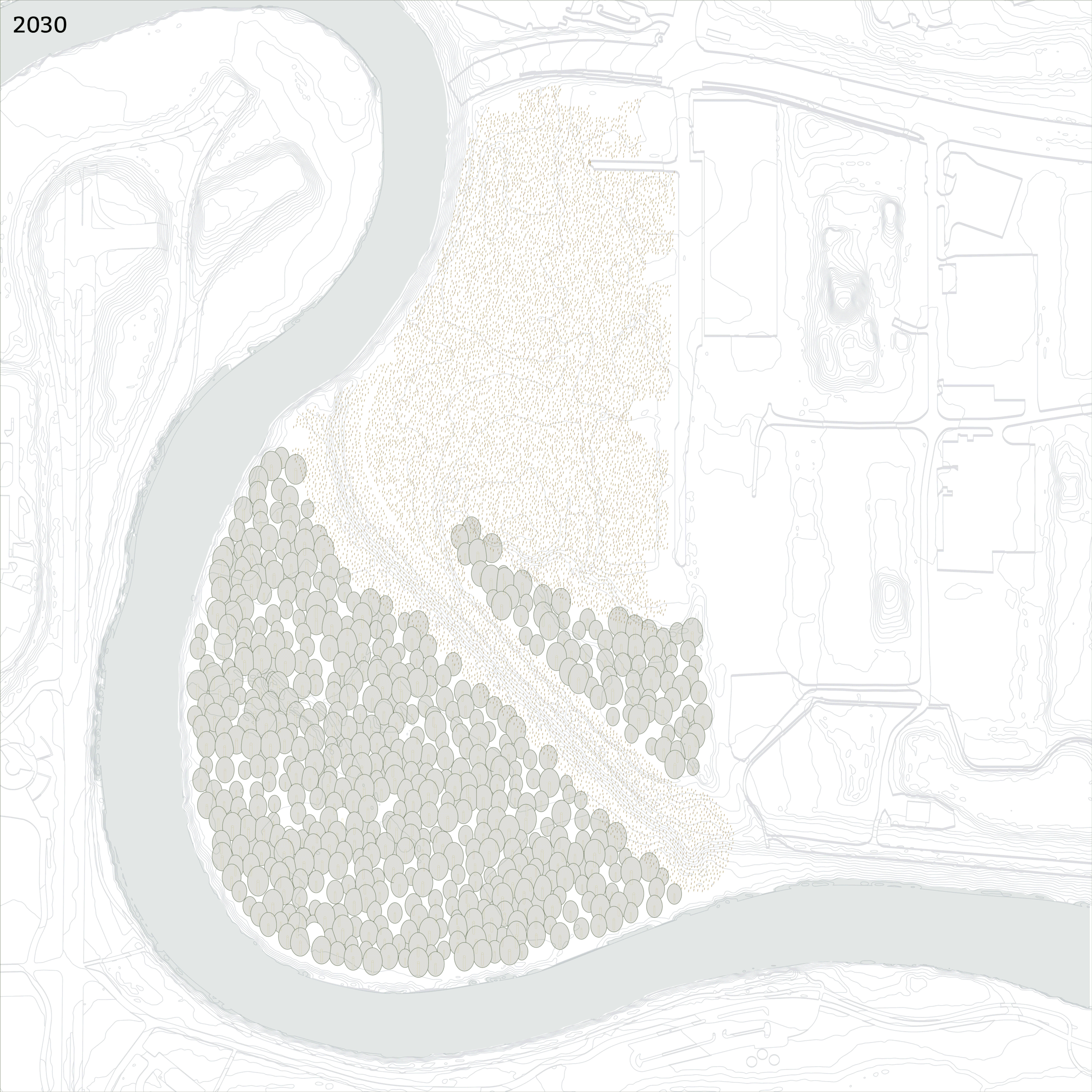Under the instruction of Peter Zuroweste
In collaboration with Andres Rosas & Brittany Brcka
The Des Moines TCE Superfund site presents a complex challenge: addressing environmental contamination, flood risk, and social inequities rooted in historical injustices and unsustainable practices. This project seeks to transform the site through an innovative approach that intertwines environmental remediation with ethical housing opportunities. Drawing inspiration from Indigenous stewardship practices, the design aims to rematriate the landscape by restoring natural water filtration systems and embracing the seasonal flood cycle. The vision involves creating a space where native biomes (prairie, wetland, savannah, and forest) flourish, working to purify the soil and water over time. By combining traditional ecological knowledge with modern environmental techniques, the project strives to foster a sustainable and resilient community that honors both the ecosystem and the people who inhabit it. The ultimate goal is to turn a site of tragedy into a model for ecological restoration and social equity.
Agridisastropia
As the natural areas develop, human occupancy will emerge above the restored landscape. Towers on stilts and hills topped with community centers will create a separation between the natural and built environments. This design embraces the site’s natural flooding patterns, allowing water to filter the soil over time. The distinct zones represent different biomes native to Iowa, creating diverse ecosystems within the remediated area. The towers and elevated community spaces provide safe havens during floods while fostering a sense of community resilience and environmental stewardship.

